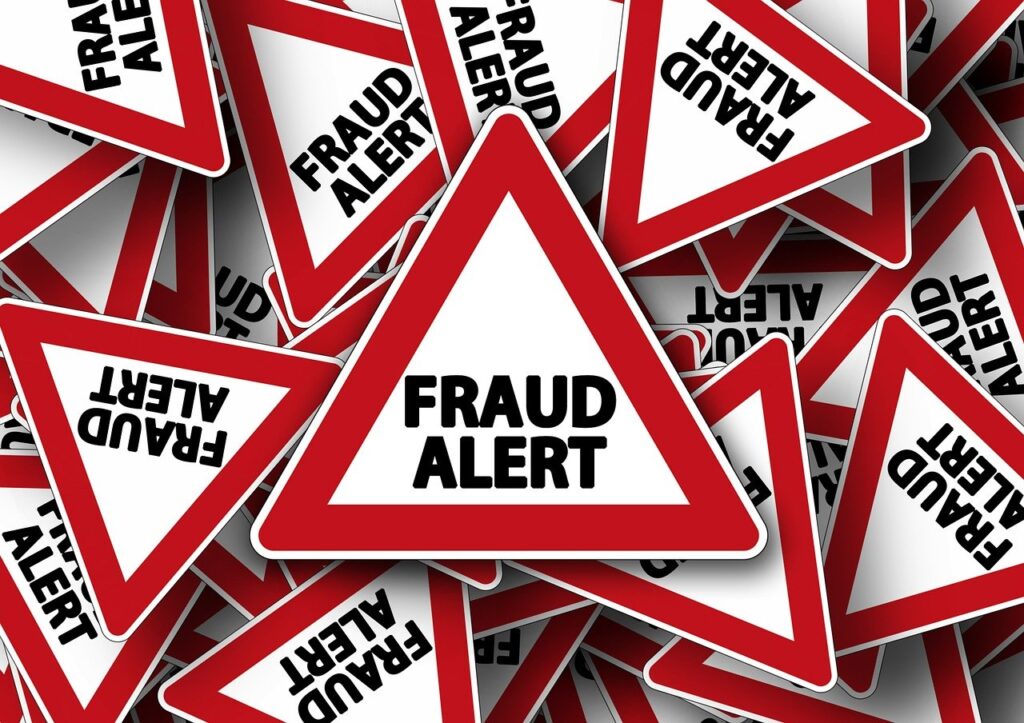Cryptocurrency has emerged as a new challenge for attorneys and investigators, as the personal injury litigation landscape continues to evolve. These digital assets can be intentionally hidden from disclosure, thereby undermining fair settlements and judgments. This guide outlines how to locate latent crypto assets in personal injury claims, as well as how to deal with the fraught mess of crypto fraud.
Table of Contents
- 1 The Rising Challenge of Hidden Cryptocurrency Assets in Personal Injury Claims
- 2 Proven Techniques to Uncover Hidden Cryptocurrency Assets in Legal Investigations
- 3 How to Spot Crypto Fraud: Common Red Flags and Warning Signs
- 4 Safeguarding Against Crypto Scams: Your Legal Rights and Protection Methods
- 5 Key Stages in a Cryptocurrency Fraud Investigation: A Step-by-Step Guide
- 6 Essential Tools and Methods for Cryptocurrency Fraud Investigations
- 7 Crypto Fraud Prevention: Identifying Red Flags in Blockchain Transactions
- 8 How to Take Legal Action After Falling Victim to Cryptocurrency Fraud
- 9 Financial Recovery Through Civil Litigation: What Victims Need to Know
- 10 Reporting Cryptocurrency Scams to Federal Agencies: What You Need to Know
- 11 How to Request Restitution for Crypto Losses Through Trading Platforms
- 12 What a Crypto Fraud Attorney Can Do to Help You
The Rising Challenge of Hidden Cryptocurrency Assets in Personal Injury Claims
Personal injury cases would require the full financial disclosure from everyone involved. Conversely, some defendants or claimants may try to hide assets, including cryptocurrencies, so as not to give just compensation or to artificially inflate damages. In that sense, the pseudonymous Ness of cryptocurrencies and the minimal regulation surrounding this asset class make them a very conducive medium for wealth concealing.
Once the defendant asserts, they have no ability to pay a settlement while they sit on huge crypto assets, or when a claimant hides some of his financial recovery to maximize his damages, the very integrity of the legal process is at stake.
Proven Techniques to Uncover Hidden Cryptocurrency Assets in Legal Investigations

Concealed financial cryptocurrency trading requires specialized knowledge and a certain methodology for investigation:
- Digital Forensics: Searching an electronic device may reveal instances of wallet applications, exchange accounts, or transaction histories telling what sort of crypto ownership might be at stake.
- Financial Analysis: Lots of money movement, say to known cryptocurrency exchanges, usually hint at an attempt to convert fiat money into digital assets.
- Blockchain Analysis: The public blockchain record can be analysed to follow transactions even when parties attempt to obfuscate ownership using multiple wallets.
- Exchange Subpoenas: Legal means require the cooperation from a cryptocurrency exchange to obtain outright account information and transaction histories for the parties involved.
- Social Media Investigation: Sometimes persons betray-holdings of crypto-convicting clues through social media posts or forum discussions.
How to Spot Crypto Fraud: Common Red Flags and Warning Signs
When pursuing a crypto fraud lawsuit, it becomes very important to know the warning signs indicating possible fraudulent activity. Efficient tracing of cryptocurrency moves provides considerable help in detecting fraud early enough to stop an investor from suffering huge loss. Some key indicators that can serve to indicate that you may be dealing in cryptocurrency fraud are presented below:
- Strange Activity on a Crypto Account: Transactions you did not initiate or sudden changes in your balance are always the first warnings of compromise. Being the first line of defence, full-featured crypto asset tracking systems should alert you to such anomalies at once, thus potentially putting a stop to further unauthorized access.
- Transaction Requests with Newness Wallets: These should always be treated with extreme caution, especially if they are from an unknown or unverified wallet address. Legitimate crypto platforms generally come with some kind of verification mechanism to assist in verifying the counterparty to a transaction and to prevent such fraud.
- Unexpected Transfers of Assets: In keeping track of your cryptocurrency holdings, anything that draws sudden movements in your digital assets to unfamiliar locations should be closely scrutinized. Most unauthorized transfers take place fast; assets flow through multiple wallets to hide their trail before the victim can ascertain the theft.
- Patterns of Anonymity in Transactions: While the blockchain does give some level of privacy, nefarious treatment of this characteristic is one of its greatest weaknesses from an adversarial point of view. In some instances, forensic blockchain analysis can be used in a crypto fraud lawsuit to circumvent these attempts at anonymity, particularly when perpetrators finally convert the crypto to fiat cash.
- Suspicious Requests for Information: A legitimate platform will almost never request you to provide sensitive personal information through unofficial channels. Beware of messages asking for your login credentials or wallet’s recovery phrase and private keys. These are almost certainly phishing attempts designed to steal control of your digital assets.
Safeguarding Against Crypto Scams: Your Legal Rights and Protection Methods
The best protection against fraud will be to use tracking solutions for crypto assets. Tracking solutions will monitor activity on the blockchain in real time and will alert you to suspicious transactions before you incur significant losses.
If your information or assets have been utilized for cryptocurrency fraud, it is advisable to document all transaction detail for any potential cryptocurrency fraud lawsuit you may initiate. Preserving evidence of a breach and falsified, evading or questionable transaction patterns, as well as any evidence of exchanges with alleged fraudster(s), can improve and strengthen your claims.
It is worth noting that forensic tracing of Bitcoins on blockchain networks frequently requires expert guidance. If you choose to commence legal action, collaborating with the right legal team (lawyers and forensic experts) experienced in tracing digital assets, are far more qualified to assist with possible recovery and litigation than if you acted alone.
Key Stages in a Cryptocurrency Fraud Investigation: A Step-by-Step Guide
- Assess the situation: To cure a response, coordinated efforts have been presented against the fraud of investment in cryptocurrency to find the perpetrators and to recover the assets.
- Collect evidence: Law enforcement agencies first conducted an exhaustive assessment of the scam, determined the major players, and established the methods used. Upon the inception of such cases, they immediately pursue evidence collection in line with existing cryptocurrency compliance frameworks to ensure that all relevant activities are appropriately witnessed and recorded.
- Collect transaction data: Investigators would collect transaction data, mapping the movement of funds on the blockchain, and put them through KYC and AML scrutiny to find out if all the parties to this suspicious transaction are allowed to operate legally.
- Crypto compliance analysis: From the law enforcement side, specialized tracing tools help follow the trace of digital currencies through several wallets to understand the complete route taken by stolen funds. In complex scenarios involving very big money or crossing international borders, they escalate it to other law enforcement agencies.
- Trace Funds: The final objective of the process is to recover funds by any lawful means. Lawyers then mediate to enable investigators in their quest to return the assets to their rightful owners along all possible channels.
Essential Tools and Methods for Cryptocurrency Fraud Investigations
Digital forensic discussants, and those with certifications in tracing cryptocurrency usage, employ expensive blockchain analysis instruments to detect fraudulent transactions. During complex investigations, examiners can use the techniques of the higher tracking methodologies to determine and recognize suspicious schemes and abnormal behaviour on decentralized ledgers.
Again, these specialist instruments provide ample assistance to legal firms and police departments to help track the digital assets that they were deprived and that gave the agency to build an important case against the criminals. The specialized technology enables a complete and quality level of tracking, to show both the passage and the whereabouts of the illegitimate funds.
- Blockchain Forensics: Leading Tools and Software for Crypto Asset Tracing
Into investigators tracking assignments, investigators will use specialized blockchain analysis software to track transactions by simply following the trail of information that is preserved within the distributed ledger systems. These sophisticated forensic applications grant their users the capability to discover hidden wallet addresses and ultimately display networks of activity related to the fraud scheme.
- Tracking Crypto Transactions: Tracing Wallets and Exchange Activity
Tracing cryptocurrency transactions is the process of following the electronic paper trail from one digital wallet to another until the investigator reaches an exchange endpoint and reveals the destination of any stolen assets. Tracing cryptocurrency transactions is a methodical process of tracking to identify specifics like possible basic suspects and illicit operation. Although very valuable for guiding asset recovery, such mapping is very helpful in forming the basis for prosecution, civil recovery, and/or criminal conviction of those involved in cryptocurrency theft.
Crypto Fraud Prevention: Identifying Red Flags in Blockchain Transactions
When forensic experts investigate financial crimes in cryptocurrency, they track several key indicators. Of particular emphasis is the transfer of money out to unknown wallets that is out of the normal context of activity, as this often is the first indicator of a potential scam.
Analysts look at transaction variables and examine account activity that shows abnormally high transaction volume or wallet transfers to additional wallets and will often label this potential money laundering or fraud. They have established patterns and can track multi-step transfers of money across various virtual assets and can often confirm when users are attempting to cover their tracks to hide the source of the income stream.
Mixed in with cryptocurrency forensic specialists, researchers examine bursts of activity that are unaccountable, as these often indicate that a user is attempting to redeploy assets quickly before any detection occurs. Investors also examine their wallet usage, as activity surrounding the wallet can show an established pattern, but then the activity can change based on behavioural patterns which many times assists in attributing and tracking the funds lost to well executed and sophisticated crimes through the utilization of cryptocurrency.
How to Take Legal Action After Falling Victim to Cryptocurrency Fraud
A victim of cryptocurrency fraud has several legal paths to recover their capital. A civil lawsuit would often provide the victims with the fast track to compensation against the individuals who committed the fraud.
Victims can file fraud reports with regulatory entities such as the Federal Trade Commission and Securities and Exchange Commission or the Federal Bureau of Investigation, and these agencies and others may initiate investigations into the claims made by the victim. Other options for recovering compensation may be possible through the cryptocurrency exchanges or other platforms that were used in the fraudulent transactions.

Financial Recovery Through Civil Litigation: What Victims Need to Know
If you are the victim of a crypto scam, you may be able to sue in a civil court and receive monetary damages from those responsible for your damages. This is another avenue to return stolen or lost crypto assets, as well as punishing those who defrauded the victims.
The victim must have sufficient knowledge of the fraud and of the harm he or she sustained to influence the applicable elements for the lawsuit. If the victims can get to that stage in the court proceedings, they can then ask the court to order restitution for the investors’ losses suffered as part of the investments.
Reporting Cryptocurrency Scams to Federal Agencies: What You Need to Know
Reporting crypto fraud to government agencies is an important step toward seeking justice and the recovery of stolen assets, if possible. Agencies like the SEC, FTC, and FBI have the authority to investigate and take enforcement action against crimes committed in connection with crypto trades.
The Commodity Futures Trading Commission (CFTC) has also played an important role in the area, especially in relation to crypto assets deemed to be commodities like Bitcoin and Ether. The CFTC enforces laws against fraud and market manipulation in the sale or purchase of crypto. Victims may report suspicious acts to the CFTC, which may investigate or pursue formal enforcement actions, and the agency also provides educational materials on avoiding and identifying crypto scams.
How to Request Restitution for Crypto Losses Through Trading Platforms
Victims of cryptocurrency fraud may attempt to obtain restitution through the very exchange on which the fraudulent act took place. Under normal circumstances, many crypto exchanges do have mechanisms set in place to assist users with recovering their lost assets in cases involving fraud.
By alerting the exchange to the scam activity, the victim could cause the freezing of accounts and wallets suspected of dubious conduct. Some platforms go one step further and have recovery teams dedicated to tracking down and reclaiming the stolen assets. Recovery, however, is difficult and often forces victims to present exhaustive evidence to substantiate their claims.
What a Crypto Fraud Attorney Can Do to Help You
If you have undergone any of the many frauds involving cryptocurrencies, a crypto fraud lawyer can help. These lawyers specialize in investigating fraud, finding those responsible, and recovering lost assets for their clients. They will also defend your interests throughout any legal proceedings.
Having a lawyer with experience in crypto cases could keep the perpetrators from getting away and assist you throughout the process. They are also able to give you advice on how to safeguard your digital assets from further attacks and were very good in alerting you to what signs to look out for when trying to avoid future scams.
















